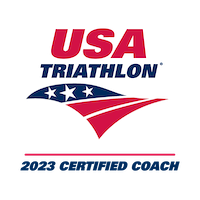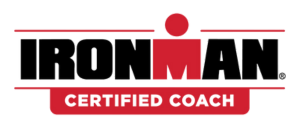I can still remember my first months as a triathlete. I read many books and found most of them overly complicated. I wish someone would have explained to me where I should focus on. In this article, I hope to achieve exactly that for you so you can learn from all my mistakes and the different tools I have tested.
1. CONSISTENCY IS WHAT MAKES THE BIGGEST DIFFERENCE
If you need to remember only one word from this article, it would be consistency. No matter which platform, tool, or coach you will use, training consistently will bring you the most benefit.
Remember that missing one workout is not that big of a deal as it won’t significantly affect your overall performance. However, skipping days or weeks will.
It might sound too easy. But looking back at my years of triathlon training, my best performances were always when I hit my training plan consistently.
2. YOUR TRAINING WILL DIFFER DEPENDING ON THE TYPE OF RACE
If you are new to triathlon, you might think that all triathletes train similarly. It is far from that.
The biggest differentiator is the race distance. It will have a considerable impact on how you will train. As you can imagine, racing for 45 min or 17 hours requires different training. The longer the race is, the lower the intensities of the race, but also the majority of workouts will be.
To learn more about the different distances, look at this article: A Quick Overview Of All Triathlon Distances.
Training for a cross triathlon where the bike and run are off-road or for a hilly race will also require a specific training program.
3. CHOOSE A TRAINING APPROACH THAT WORKS FOR YOU
There are thousands of training plans to choose from. However, I am convinced that there is no one-fits-all. We do triathlons for different reasons and are motivated by other things.
To help you narrow it down, be aware of those key differences:
- Free vs. paid training plans: I tend to avoid free plans that you can find online or in some magazines. Most of those plans are designed by big names in the triathlon community to attract readers. With all my respect for them, it doesn’t mean those plans will work for you. If you are lucky and find one which fits the distance you plan to race and your current fitness level in the three sports, give it a try. Otherwise, look for a different option. There is a lot! 🙂
You will find a lot of different places online. A good one to start with is Trainingpeaks (website link, no affiliate)
- Static vs. adaptive training plans: a static plan is relatively straightforward. Whether you do today’s suggested training or not, the following ones will remain the same. On the opposite, an adaptive plan will modify your future workouts based on your past achievements. The static ones are much cheaper (a one-time fee), and you can print the entire plan if you want and follow it. The adaptive ones are only available through a coach or a training platform (recurring fee).
I am currently writing a specific article on training apps. Wait for it 😉
- Instructions based on feel vs. metrics (pace, power, heart rate): Each plan will give you directives to follow for a workout. Depending on your preferences, but also on the training gear you have, you might favor one type of instruction over another. For example, I can’t follow any plan which is based purely on feel, but I am kind of a geek when it comes to data 🙂
- Coach vs. self-coach: I can’t talk about triathlon training without mentioning a triathlon coach. A good coach will not only give you a training plan. That’s simply the bare minimum! He will also help you accelerate your learning curve and inspire and motivate you along the way.
As written in this article, The Cost Of Triathlon Coaches And What You Can Expect To Get, they mostly charge based on the number of interactions you want to receive.
4. EXPERIMENT WITH A NEW PLATFORM/COACH BUT GIVE IT ENOUGH TIME TO TEST IT
My wife is always amazed at how much I can work on something and switch without being too sentimental about it. It is just in my personality. If I think I could do something better, I have no problem trying it out.
When it comes to triathlon training, switching training plans/platforms can sometimes be a good idea. It keeps me and you up to date with the latest innovation, change the routine, and can keep you motivated. However, none of the training platforms or coaches will give you substantial improvement overnight. Remember, consistency is key 😉
So if you want a change, don’t be afraid, but at the same time, give it enough time to see if it is beneficial for you.
5. AVOID JUMPS IN THE TRAINING LOAD
My biggest injury to date kept me out of running for a couple of months. Looking back, I could have avoided it by increasing the training load progressively. Instead, I pretty much doubled my training load from one week to the next…
We are always wiser after the fact.
6. DON’T HESITATE TO SPEND SOME MONEY ON TRAINING GEAR
Triathlon is quite an expensive sport; there is no doubt about that. I know some triathletes who try to avoid paying for a premium training platform but simultaneously spend hundreds of dollars on bike gadgets. If your budget allows it, I highly recommend paying for one of the options I mentioned previously.
7. USE THE TRAINING OF THE PROS AS MOTIVATION, NOT AS A TRAINING PLAN
I love that more and more pros are sharing their training on Strava and/or on Youtube. It is an excellent source of motivation for me to keep training and racing. However, please don’t use those training as your training plan. It could lead to disaster.
8. LISTEN TO YOUR BODY
I don’t know a single triathlete who disagrees with that statement. But when it actually comes to stopping training because you are sick or feel tired, then it is a different story.
It is not easy to skip workouts, but when this time comes (and it will at some point), think about the bigger picture. You are better off taking some days of rest than making it worse by keeping training.


